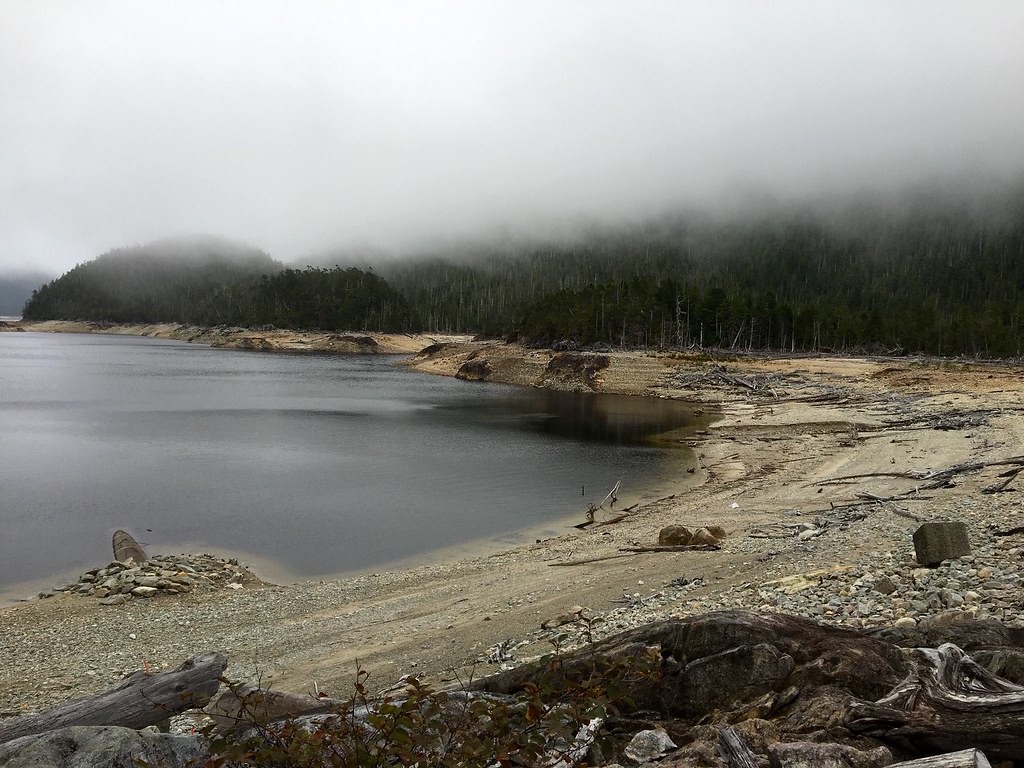Extreme drought in a rainforest might seem like an oxymoron, but it isn’t.
Since early 2018, the southern portion of Alaska’s Tongass National Forest, the largest intact temperate rainforest in the world, has experienced moderate to extreme drought. This has wide-ranging consequences on drinking water supplies, electricity costs, salmon habitat and forest health.

The drought has become so extreme that in June, the National Weather Service issued a red flag warning for Juneau—a caution many local residents have never seen. The warning was issued due to low humidity, dry fuels and strong winds that could result in extreme fire behavior.
Unlike extreme droughts in the Southwest U.S., where dried creek beds and withered plants are the result of no precipitation, drought in the rainforest means rain and snow events still occur, just less frequently and in lower amounts than average over an extended period. For context, the annual average precipitation in Ketchikan, Alaska, is 141 inches. Since September 2017, Ketchikan has received only 78 percent of its normal precipitation.
Water in all its forms—rain, snow and ice—is integral to the regional economy. It supports stream systems for commercial and subsistence salmon fishing, which translates to a $1.5 billion industry, and produces clean hydroelectric power for over 60,000 customers. Winter snowpack also plays an important role, storing water in reservoirs, lakes and streams for people and fish, and is critical to the survival of culturally and commercially valuable yellow cedar trees.

With average annual temperatures that are projected to rise an additional 2 to 4 degrees by 2050—in a region that has warmed at twice the pace of the rest of the world—variable precipitation patterns are expected to have significant consequences for the environment.
Drought is an inevitable part of normal climatic function, but global trends project it may become more frequent and severe in many places as the Earth becomes hotter and precipitation patterns change.
For instance, snow droughts occur when warmer winter air temperatures cause precipitation to fall as rain instead of snow or when weather patterns are unusually dry and little precipitation of any kind falls. Both kinds of snow droughts lead to decreases in the amount of water held in spring snowpack. Snow droughts, in addition to well below average summer and fall rainfall in 2018 and 2019, have led to significant impacts to hydroelectric power and drinking water in many Southeast Alaskan communities.
In May 2019, the Northwest Climate Hub held a workshop on the Southeast Alaska drought in Juneau, Alaska. The workshop, held in collaboration with partners including the National Drought Mitigation Center, NOAA, U.S. Geological Survey, local university partners and local tribes, helped participants get a better sense of drought, impacts of drought, and interconnections in Southeast Alaska to help refine drought thresholds. Recordings and presentations from the workshop can be found on the Climate Hub website.

Adaptation planning in the Last Frontier will require new ways of thinking about how to manage human-built and natural environments for fish, wildlife and people.
That’s why the USDA Northwest Climate Hub and USDA Forest Service are preparing and implementing strategies to enhance long-term resilience of Southeast Alaskan communities and ecosystems. Many of these strategies, from building flexible trailheads, to improving winter recreation access, to placing logs in streams to improve salmon habitat, are summarized in a recent USDA publication.
